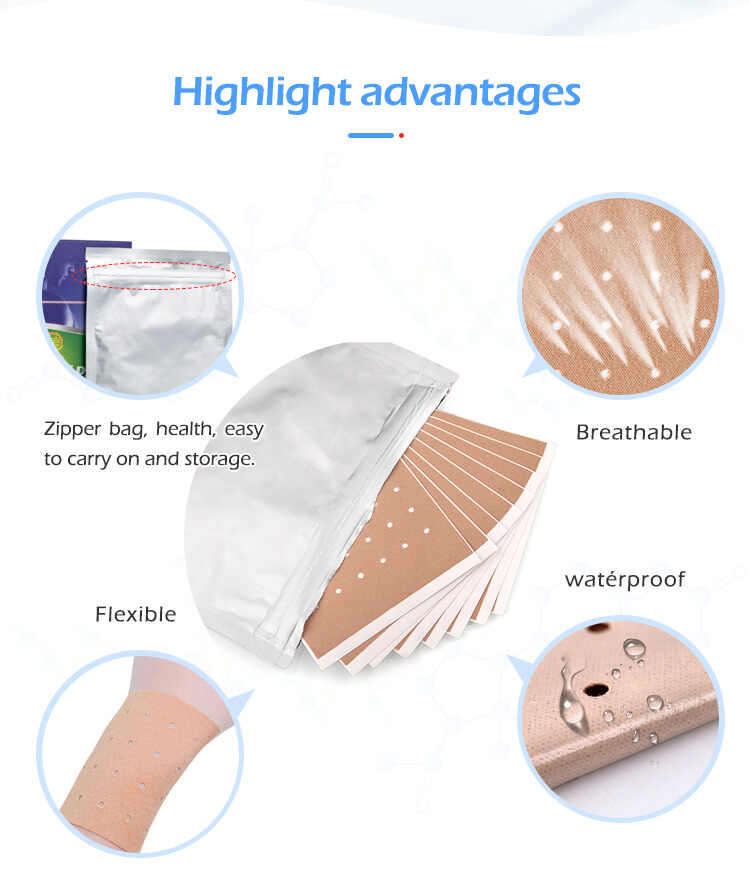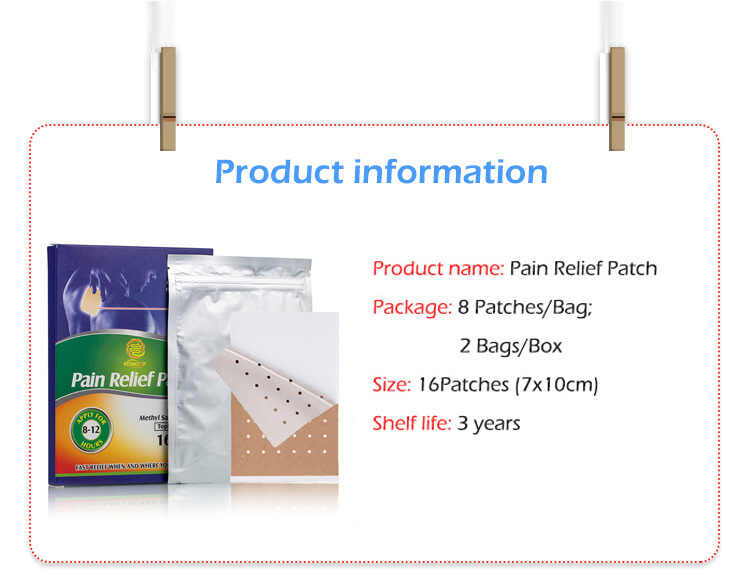Are OEM Back Pain Patches Safe for All Skin Types?
When choosing a Back Pain Patches OEM for your brand, product safety is a top priority. Skin sensitivity varies across individuals, and ensuring that Custom Back Pain Patches are suitable for all skin types is crucial for consumer trust and brand reputation. Businesses partnering with a Back Pain Patches Manufacturer must consider formulation, materials, regulatory compliance, and dermatological testing to provide safe and effective Private Label Back Pain Patches.
This article explores the factors influencing skin compatibility, common allergens, safety testing procedures, and how to choose a reliable Back Pain Patches Supplier for safe products.

Factors Affecting the Safety of OEM Back Pain Patches
1. Ingredients Used in the Formulation
The ingredients in Custom Back Pain Patches play a vital role in their safety. Some common ingredients include:
Menthol and Camphor – Effective for pain relief but can cause irritation in sensitive skin.
Capsaicin – Known for its warming effect but may trigger reactions in people with allergies.
Herbal Extracts (e.g., Arnica, Ginger, Eucalyptus) – Generally safe but may cause allergies in rare cases.
Adhesives – Certain adhesives may contain latex or other compounds that can irritate the skin.
2. Skin Sensitivity and Allergy Risks
While many Private Label Back Pain Patches are designed for general use, individuals with sensitive skin or pre-existing conditions (e.g., eczema, dermatitis) may experience mild reactions. Businesses should work with a Back Pain Patches Manufacturer that offers hypoallergenic formulations.
3. Regulatory Compliance and Safety Testing
A trustworthy Back Pain Patches OEM ensures that products meet international safety regulations, such as:
FDA (U.S. Food and Drug Administration) approval
CE certification for European markets
Good Manufacturing Practices (GMP) compliance
ISO certification for quality assurance
Reliable Back Pain Patches Suppliers also conduct dermatological tests to assess potential irritants and ensure product safety.
4. Breathability and Material Quality
The patch material affects comfort and safety. High-quality Custom Back Pain Patches use breathable, non-toxic fabrics that minimize sweat buildup and irritation.
5. Adhesive Strength and Duration
A well-balanced adhesive ensures that the patch stays in place without causing skin damage. A good Back Pain Patches Manufacturer should provide options with different adhesive strengths based on customer preferences.
How to Ensure OEM Back Pain Patches Are Safe for All Skin Types
1. Choose a Reputable Back Pain Patches Manufacturer
Partnering with a Back Pain Patches OEM that prioritizes safety, dermatological testing, and compliance ensures that your product is safe for a broad consumer base.
2. Opt for Hypoallergenic and Dermatologist-Tested Formulations
Look for Private Label Back Pain Patches that have been clinically tested for skin sensitivity. Hypoallergenic formulas reduce the risk of irritation and allergic reactions.
3. Provide Clear Usage Instructions
Consumers should be educated on how to apply patches properly, including recommendations for sensitive skin users, such as performing a patch test before full application.
4. Offer Multiple Variants for Different Skin Types
Brands can work with a Back Pain Patches Supplier to develop different formulations:
Regular formula for general use
Sensitive skin formula with milder ingredients
Extra-strength formula for deep pain relief
5. Conduct Customer Trials and Collect Feedback
Before launching a new Custom Back Pain Patch, businesses should conduct small-scale consumer testing to gather feedback on skin reactions, comfort, and effectiveness.
Frequently Asked Questions (FAQs)
1. Are OEM Back Pain Patches safe for sensitive skin?
Most are, but some may contain ingredients that can trigger reactions. It’s best to choose hypoallergenic options from a trusted Back Pain Patches Manufacturer.
2. What ingredients should people with sensitive skin avoid?
Common irritants include capsaicin, strong adhesives, and certain essential oils. Always check the ingredient list before use.
3. Do all Private Label Back Pain Patches undergo safety testing?
Reputable Back Pain Patches OEM providers conduct dermatological and safety testing to ensure their products meet regulatory standards.
4. How can I minimize skin reactions when using back pain patches?
Perform a patch test on a small skin area before full application and follow the usage instructions provided by the manufacturer.
5. Can I customize an OEM Back Pain Patch for ultra-sensitive skin?
Yes, many Back Pain Patches Suppliers offer customization options, including gentler formulas and hypoallergenic adhesives.
Conclusion
OEM Back Pain Patches can be safe for all skin types when formulated correctly and tested for dermatological compatibility. By choosing a reliable Back Pain Patches Manufacturer that adheres to strict safety and quality standards, businesses can offer Custom Back Pain Patches that cater to a diverse customer base. Investing in high-quality Private Label Back Pain Patches ensures consumer satisfaction and long-term brand success.






